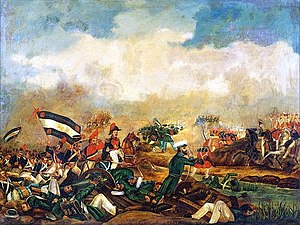
Manuel Ceferino Oribe y Viana was the 2nd Constitutional president of Uruguay and founder of Uruguay's National Party, the oldest Uruguayan political party and considered one of the two Uruguayan "traditional" parties, along with the Colorado Party, which was, until the 20th Century, its only political adversary.

The National Party, also known as the White Party, is a major political party in Uruguay. It was founded in 1836 by Manuel Oribe, making it the country's oldest active political party, and together with the Colorado Party, its origin dates back to the time of the creation of the Uruguayan State.
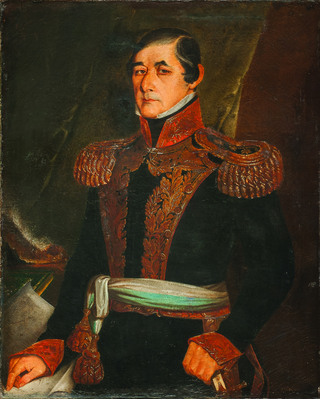
José Fructuoso Rivera y Toscana was a Uruguayan general and patriot who fought for the liberation of Banda Oriental from Brazilian rule, thrice served as President of Uruguay and was one of the instigators of the long Uruguayan Civil War. He is also considered to be the founder of the Colorado Party, which ruled Uruguay without interruption from 1865 until 1958. He made a controversial decision to almost completely eliminate the native Charrúa during the 1831 Massacre of Salsipuedes.

The Battle of Caseros was a military engagement fought near the town of El Palomar, Buenos Aires Province, Argentina, on 3 February 1852, between the Army of Buenos Aires commanded by Juan Manuel de Rosas and the Grand Army led by Justo José de Urquiza. The forces of Urquiza, caudillo and governor of Entre Ríos, defeated Rosas, who fled to the United Kingdom. This defeat marked a sharp division in the history of Argentina. As provisional Director of the Argentine Confederation, Urquiza sponsored the creation of the Constitution in 1853, and became the first constitutional President of Argentina in 1854.
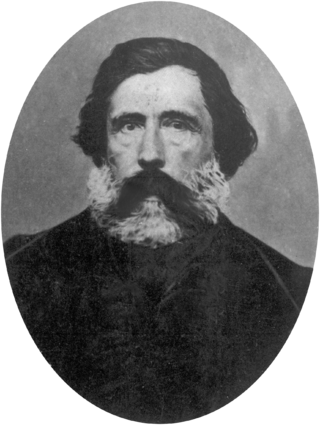
Venancio Flores Barrios was a Uruguayan political leader and general. Flores was President of Uruguay from 1854 to 1855 (interim) and from 1865 to 1868.

The Uruguayan Civil War, also known in Spanish as the Guerra Grande, was a series of armed conflicts between the leaders of Uruguayan independence. While officially the war lasted from 1839 until 1851, it was a part of armed conflicts that started in 1832 and continued until the final military defeat of the Blancos faction in 1904.

Aparicio Saravia da Rosa was a Uruguayan politician and military leader. He was a member of the Uruguayan National Party and was a revolutionary leader against the Uruguayan government.

Brazil–Uruguay relations encompass many complex relations over the span of three centuries, beginning in 1680 with the establishment of the Colónia do Sacramento, to the present day, between the Federative Republic of Brazil and the Oriental Republic of Uruguay. Brazil and Uruguay are neighbouring countries in South America, and share close political, economic and cultural ties. The singularity of the bilateral relationship between the two countries originates from a strong historical connection, as both countries having been territories of the Portuguese Empire and sharing the same language – marked by important events, such as the establishment of the Colónia do Sacramento in 1680, the invasion of the Banda Oriental by Brazil in 1815 and the subsequent creation of the Província Cisplatina, and Uruguay's independence from Brazil in 1828. The bilateral relationship was further defined by the Uruguayan Civil War (1839–1851) and the Paraguayan War (1864–1870).
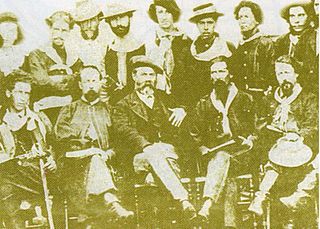
The Revolution of the Lances occurred in Uruguay from September 12, 1870 to April 6, 1872.

The Platine War was fought between the Argentine Confederation and an alliance consisting of the Empire of Brazil, Uruguay, and the Argentine provinces of Entre Ríos and Corrientes, with the participation of the Republic of Paraguay as Brazil's co-belligerent and ally. The war was part of a decades-long dispute between Argentina and Brazil for influence over Uruguay and Paraguay, and hegemony over the Platine region. The conflict took place in Uruguay and northeastern Argentina, and on the Río de la Plata. Uruguay's internal troubles, including the longrunning Uruguayan Civil War, were heavily influential factors leading to the Platine War.
Montevideo, or the new Troy is an 1850 novel by Alexandre Dumas. It is a historical novel about the Uruguayan Civil War, where the Uruguayan presidents Manuel Oribe and Fructuoso Rivera disputed the rule of the country. The name sets a parallelism with the Trojan War, as Oribe kept Montevideo, capital of Uruguay, under siege for many years.

The Anglo-French blockade of the Río de la Plata was a five-year-long naval blockade imposed by France and Britain on the Argentine Confederation ruled by Juan Manuel de Rosas. It was imposed in 1845 to support the Colorado Party in the Uruguayan Civil War and closed Buenos Aires to naval commerce. The Anglo-French navy trespassed into Argentina’s internal waters to sell their products, as Rosas maintained a protectionist policy to improve the weak Argentine economy. Eventually both Britain and France gave in, signing treaties in 1849 (Britain) and 1850 (France) acknowledging the Argentine sovereignty over its rivers.

Ángel Pacheco, was an Argentine military officer trained by José de San Martín who later became one of the top commanders in the Confederacy during the dictatorship of Juan Manuel de Rosas. He never lost a battle under his command.

The Great Siege of Montevideo, named as Sitio Grande in Uruguayan historiography, was the siege suffered by the city of Montevideo between 1843 and 1851 during the Uruguayan Civil War.
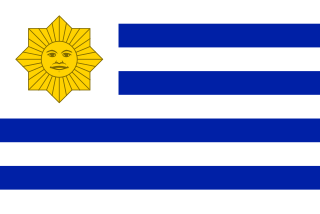
The Cerrito Government governed almost all the Uruguayan territory during the Great Siege of Montevideo (1843-1851). It was led by Manuel Oribe y Viana.

The Battle of Sarandí was fought on 12 October 1825, in the vicinity of the Arroyo Sarandí in Uruguay, between troops of the Banda Oriental and the Empire of Brazil. It resulted in a decisive victory for the Orientals.
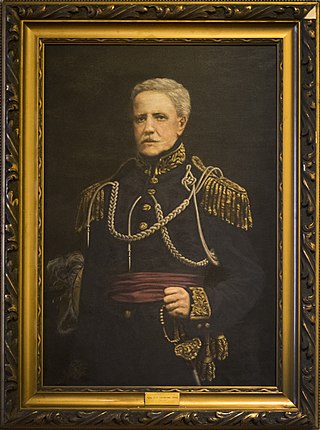
José Brito del Pino (1797–1877) was a Uruguayan soldier and patriot, who participated in the Argentine War of Independence, the Cisplatine War and the Uruguayan Civil War. He was one of the founding members of the Partido Nacional Uruguayo.
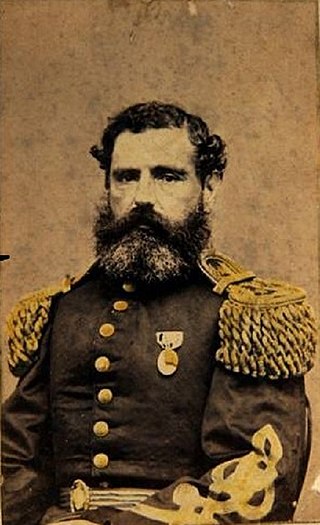
José Pons de Ojeda, later known as León de Pallejas was a Uruguayan general of Spanish origin who participated in the First Carlist War, the Argentine Civil Wars and the Paraguayan War.

Melchor Pacheco y Obes was a military officer and politician with outstanding activity in what is now present-day Uruguay. He was a member of the Colorado Party and was one of the fundamental men of the Gobierno de la Defensa in Montevideo, during the Uruguayan Civil War.

Emilio Mitre was an Argentine Lieutenant General who participated in the Paraguayan War. He was the brother of Bartolomé Mitre and participated across the Uruguayan Civil War and the Argentine Civil Wars.
